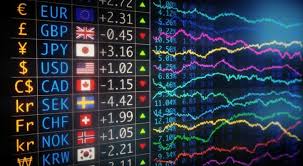
What is Forex Trading?
Forex trading, or foreign exchange trading, is the act of buying and selling currencies with the aim of making a profit. It is one of the largest financial markets in the world, with an average daily trading volume exceeding $6 trillion. Traders engage in forex trading for various reasons, including hedging against currency fluctuations, speculating on currency movements, and participating in international trade. For those looking to dive deeper into forex trading, resources such as what is forex trading https://acev.io/ provide valuable insights.
How Forex Trading Works
The forex market operates 24 hours a day, five days a week, allowing traders to engage in currency trading at any time. The trading happens over-the-counter (OTC), meaning that transactions occur directly between parties and not on a centralized exchange. Instead, currency pairs are traded, where one currency is exchanged for another. For instance, in a EUR/USD trade, the euro is the base currency and the U.S. dollar is the quote currency.
Currency Pairs and Quotes
In forex trading, currencies are always traded in pairs. The first currency in the pair is known as the base currency, while the second currency is called the quote currency. The price of a currency pair reflects how much of the quote currency is needed to purchase one unit of the base currency. For example, if the EUR/USD pair is priced at 1.20, it means that 1 euro can be exchanged for 1.20 dollars.
Traders often classify currency pairs into three categories:
- Major pairs: These include the most traded currencies, such as EUR/USD, USD/JPY, and GBP/USD.
- Minor pairs: These pairs do not include the U.S. dollar but involve other major currencies, such as EUR/GBP and AUD/NZD.
- Exotic pairs: These consist of a major currency paired with a currency from a developing economy, like USD/TRY (U.S. dollar/Turkish lira).
Leverage in Forex Trading
One of the unique features of forex trading is the use of leverage. Leverage allows traders to control a larger position than the capital they have in their trading account. For example, a leverage ratio of 100:1 means that a trader can control $100,000 with only $1,000 in capital. While leverage can amplify profits, it also increases the risk, as losses can exceed the initial investment.
Types of Forex Analysis
Successful forex trading relies on thorough analysis and understanding of market trends. Traders typically use one or a combination of the following analysis methods:
1. Fundamental Analysis
This approach involves evaluating economic indicators, political events, and other factors that can influence currency values. Key economic reports, such as GDP growth, employment figures, and inflation rates, provide insight into a country’s economic health and can impact currency movements.
2. Technical Analysis

Technical analysis focuses on historical price data and chart patterns to predict future price movements. Traders use various tools, such as trend lines, moving averages, and oscillators, to identify potential entry and exit points for trades.
3. Sentiment Analysis
This type of analysis gauges market sentiment, or how traders feel about the market. Understanding market sentiment can help traders anticipate future price movements based on collective behavior.
Benefits of Forex Trading
The forex market presents several advantages for traders, including:
- High Liquidity: The forex market’s vast size means that it has high liquidity, allowing traders to execute orders quickly and at desired prices.
- Accessibility: With online brokers and trading platforms, forex trading is accessible to a wide range of individuals, making it easy to start trading with relatively small amounts of capital.
- Variety of Trading Options: Forex trading offers numerous currency pairs and trading strategies, providing diverse opportunities to traders.
- 24/5 Market Hours: The forex market operates around the clock, allowing traders to choose their trading hours according to their preferences and availability.
Considerations and Risks
While forex trading can be lucrative, it also involves a level of risk. Here are some important considerations for prospective traders:
- Market Volatility: Currency prices can fluctuate significantly based on market sentiment, economic news, and geopolitical events. Traders must be prepared for sudden price changes.
- Risk of Over-Leverage: While leverage can increase profits, it can also lead to substantial losses. Traders should use leverage wisely and ensure they have proper risk management strategies in place.
- Emotional Discipline: Trading can be emotionally taxing. Successful traders maintain discipline to stick to their trading plans and avoid impulsive decisions.
Tips for Successful Forex Trading
To achieve success in forex trading, consider the following tips:
- Develop a Trading Plan: A solid trading plan outlines your trading strategy, risk tolerance, and specific goals, helping you stay focused.
- Educate Yourself: Continuous learning through courses, tutorials, and demo trading accounts can enhance your skills and understanding of the market.
- Practice Risk Management: Use stop-loss orders and manage your position sizes to minimize potential losses and protect your trading capital.
- Stay Informed: Keep abreast of relevant economic news and market trends that can impact currency movements.
Conclusion
Forex trading is a dynamic and exciting market that offers traders the opportunity to profit from currency fluctuations. By understanding how the market works, developing effective trading strategies, and managing risks, traders can navigate the complexities of forex trading successfully. Whether you are a novice or an experienced trader, continuous learning and practice will help you become more proficient in this exciting financial landscape.
